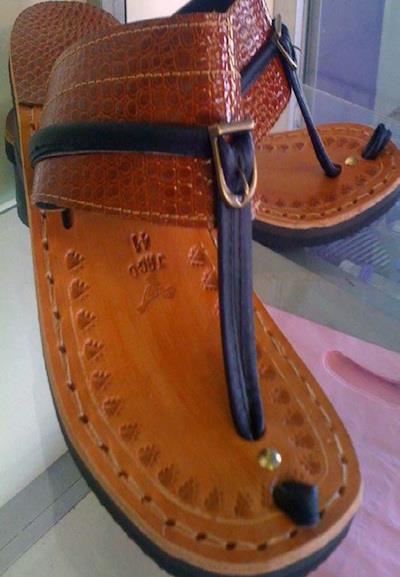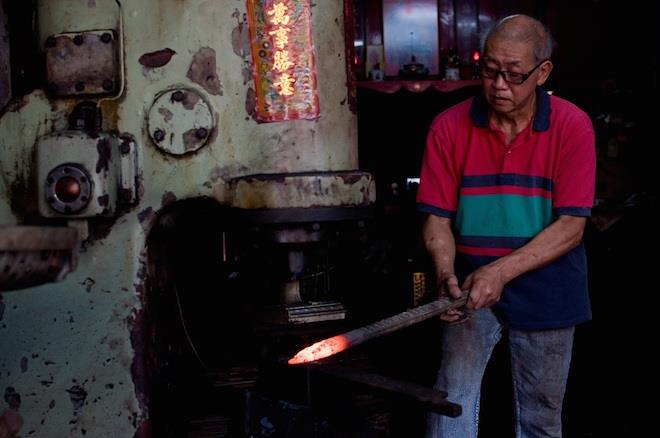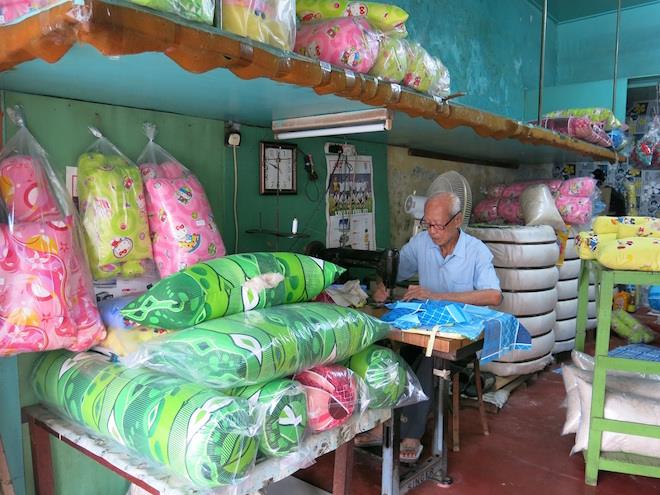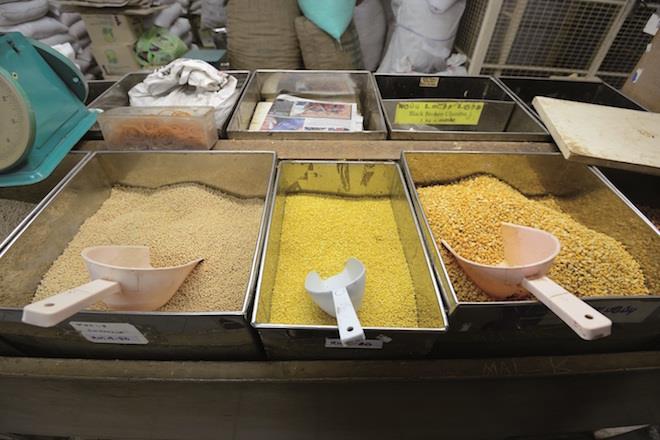If
you can imagine it, Penang streets used to house rows and rows of what are
considered today as traditional traders such as makers of prayer paraphernalia,
kitchenware, trishaw and wholesalers of dry goods and more. All of them catered
to people’s daily and festive needs. Through the decades, these handmade goods
are disappearing to give way to machine made goods that can produce in mass to
meet an ever-growing consumer demand. It is inevitable, an unapologetic
evolution, necessary to suit the times. Therefore, here are some observations
or facts collected by George Town World Heritage Inc on currently existing
traditional traders of Penang that produce products still widely used today.
Capal
The
word chappal stems from India and means slippers. These
leather sandals or slippers are mainly worn by Malay men and are considered
part of their traditional attire. Consisting of inner sole, a slight heel and
thong, capal have a distinctive design that is acceptable as
both casual and formal wear. In the very old days, royals and aristocrats of
Malaya wore them not only as daily footwear but also during scuffles and, as
history recorded, keris-drawn battles. Unlike the modern slippers of today made
out of various materials, capal has a design that never goes
out of style and this has been time-tested through decades,
Where to visit: Capal Jago on Jalan Kedah in Kepala Batas on Penang mainland.
They’ve been a handmade leather capal manufacturer since 1958. Their
product range from RM75 right up to a couple hundred ringgit.



Anchor
Maker
Perhaps
the skill that reflects George Town’s trading port heritage, it’s a known fact
that anchor making is not only a ‘high temperature’ profession but a dangerous
one as well. Mainly located very close to the waterfront area of George Town,
the two remaining blacksmiths out of four still do produce anchors for boats
and ships in Penang. One of which is Teck Ban Choon blacksmithy, run by the
grandson of the man who started it over 60 years ago. Alas, today, due to lack
of skilled blacksmiths, they no longer make large anchors that can weigh up to
300kg and instead produce small anchors needed for offshore fishing. However,
what hasn’t changed till today is, blacksmithing is still as labour intensive
as ever.
Where to visit: Tech Ban Choon Foundry on Gat Lebuh Armenian in George Town.
Kapok
Pillow and Mattress Maker
Considered
as Malaysian cotton, kapok is a natural fibre from seed pods
of its tree that grows in the wild around Malaysia. Due to its cooling effect
and hypoallergenic qualities, it’s a popular filling for pillows and
mattresses. Besides sewn into pillows and mattresses , sacks of kapok are
also sold as re-fills for when needed for old pillow and mattress. Apparently,
before foam was invented, kapok was used In floatation devices
since it’s buoyant and water resistant. There is a shop in George Town that
makes kapok-filled pillows, bolsters and mattresses on site and
even import kapok from Indonesia to top up customer demands.
They produce around 10 pillows per day and Chinese New Year is their busiest
time since many throw out old pillows and mattresses during this period.
Where to visit: 78 Lebuh Cintra in George Town. The shop is open six days a
week till 4.30pm and is closed on Sunday.

Spice Merchants
There’s nothing to
dislike about spices. They are aromatic, terrific for cooking, adds multitudes
of flavours into dishes and very useful due to their medicinal quality. There’s
a lot to thank for Malaysia’s colonial history in terms of the existence of
numerous spices in the country where the British paved the way for their
shipping as well as cultivation here. In those days, pepper, nutmeg and cloves
were cultivated in Penang to some success. Penang, known as a pepper entrepot
during the 18th century, imported the spice from Acheh and exported them across
to China and India. During this time, spice merchants from India opened stores
within Penang’s Little India enclave and they’re an enduring legacy till today.
At the port in the old days, the spices were unloaded from the ships by Indian
labourers, wheeled to nearby godowns before delivered to the stores. Today,
sundry shops at Little India show off the many ground spices needed to produce
delectable curries in open plastic tubs and are sold by the grams. These spices
are integral in the Indian cuisine that is a big part of Penang’s culinary
heritage.
Where to visit: Sundry shops on Lebuh Pasar at Little India in George Town.
There is also one on Lebuh Penang across from the Ren-I-Tang hotel. Today’s
spices come from India, China, Indonesia, Thailand, Turkey, Iran, Bulgaria and
Madagascar. At these stores, you’re able to conveniently purchase blended
ground spices for specific curries.
Images from GTWHI, MPSP and PGT